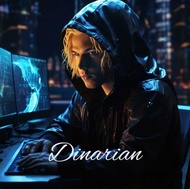(Dinarian Note: This article was written by my broker Caleb and Brown. I created an account with them in case shit hits the fan and exchanges go down. They will still be able to transact and exchange cryptos into silver, into other cryptos, into FIAT(NOT RECOMMENDED) as it's devaluing or transfer wealth wherever you wish. I highly recommend setting up an account NOW, so its there and waiting when you need it. Dont wait until its too late!)
There’s a whole world beyond Bitcoin.
Bitcoin remains the largest and most well-known digital asset, but it’s joined by thousands of other coins in the crypto ecosystem known as (alternative coins) Altcoins.
Any coin other than Bitcoin goes by this classification – from ETH to the likes of DOGE and XRP – so it's an incredibly diverse space with a large number of coins presenting vastly different use cases to investors and holders.
According to CoinMarketCap, close to 22,000 cryptocurrencies were in circulation at the end of 2022. To help you sift through the sea of altcoins, keep reading to learn all about these unique cryptocurrencies and their functions.
What Are Altcoins and Why do They Exist?
Altcoin is an umbrella term applied to any cryptocurrency other than Bitcoin. Understandable given Bitcoin’s dominance – the first ever cryptocurrency accounts for around 40% of the crypto market (by capitalisation). Altcoins’s share now stands near 60% of the total crypto market cap demonstrating strong growth since 2019 when Bitcion’s market cap made 70% of the market. It’s worth noting that Ethereum makes up 20% of the crypto market cap.
Although some altcoin projects share similarities with Bitcoin, many are altogether different in various ways from their consensus mechanism, to use case, or a combination of both.
Some altcoins have been developed to solve a problem with unique functions; others simply exist to rally and gather a community of investors and often speculators. The levels of adoption and network effects for each project vary.
Types of Altcoins and Their Use Cases
The 6 common types of altcoins are:
Stablecoins
As the name suggests, Stablecoins attempt to offer relative price stability. Their market value is usually pegged to the value of a stable asset, like USD or gold.
This design characteristic lends resistance to (price) volatility, keeping the price as close to equal that of the asset it is pegged to. For example, USDC is pegged to the US Dollar and the price of 1 USDC should be equal to 1 US Dollar at any given time.
Typically, Stablecoins are backed by a reserve asset, as is the case with USDC & USDT – both are backed by and redeemable against the US Dollar. Algorithmic stablecoins are also out there; their smart contracts constantly adjust the supply of the stablecoin to maintain a price as close to a peg as possible. Algorithmic stablecoins, though, are yet to take-off following the collapse of the Terra Luna project.
In effect, stablecoins function more like a fiat currency within a crypto space. They are often traded at high volumes, similar to cash in a traditional market, and are used as vehicles to park funds in crypto.
Meme coins
Meme coins are cryptocurrencies inspired by the social currency of the internet: memes. They could be directly inspired by a meme, like the dog-themed projects Dogecoin (DOGE) and Shiba Inu (SHIB).
Anyone with an internet connection can fabricate and distribute a meme. And with the right technical knowledge, anyone can create and distribute a meme coin, too. Every so often you’ll find celebrity-inspired coins in the market, like this Will Smith-themed coin.
Meme coins typically have a massive or unlimited supply, which accounts for their comparatively low per-unit price.
While meme coins may lack any value beyond a cultural ideal, those invested get the feeling that they're involved in something greater This community of coin evangelists help to grow or maintain interest in the asset through storytelling and social sharing.
Utility Tokens
This type of altcoin functions to provide a service within a network. They could be used as a means to gain access to a service, facilitate transactions, or earn rewards on a network. One example is XRP, a token designed to minimise the friction involved in cross-border transactions.
Another is TFuel, a coin that transfers value between users and providers on the Theta’s peer-to-peer video streaming service.
MATIC, the native token of the Polygon network has a variety of uses. Itmaintains network security through staking and is used as a gas token for transaction fees.
Investors usually invest in utility tokens because they believe in the potential of the underlying project. In a way, the token’s price value is a reflection of the value the project could provide to a wider audience.

Play-to-Earn Tokens
This type of altcoin exists within the ecosystem of a game or network of games. Users who play the game can earn cryptocurrency rewards in the form of a native token. This can then be used to make in-game purchases (e.g. game-inspired NFTs), swapped into other cryptocurrencies or cashed-out into fiat currencies.
Governance Tokens
Governance tokens give investors a say in how the project they are investing in is run. This democratised approach emphasises the decentralised nature of the project. Token owners not only use the protocol, they own it and shape it, too. Decisions are not made through a top-down, centralised hierarchy. A community votes together on any major platform changes.
Governance tokens usually exist as part of a DAO, or “decentralised autonomous organisation”. DAOs are not run by one central figure, rather users of the protocol abide by rules written into the code of the network, via smart contracts.
The level of sway investors have in a project is usually proportional to the size of their holding. An example would be Maker (MKR), which allows investors to vote on the operation of the MakerDAO platform.
Security Tokens
Security tokens are often seen as the cryptocurrency equivalent to traditional stocks, whereby investors are entitled to dividend payouts as a share of the platform’s earnings.
Investors are attracted to these altcoins thanks to their value generating properties, which investors are familiar with given the stock market. However, these tokens have been subject to regulatory scrutiny , XRP in particular, due to their profit distribution mechanisms, which demands strict regulation according to senior officials such as the SEC’s Gary Gensler.
Why Are Altcoins Important?
Altcoins provide alternative use cases and applications to Bitcoin. As the cryptocurrency market matures, altcoins will continue to gain real-world utility beyond what we’ve described in this article.
Altcoins are important because:
- Through the use of stablecoins, investors are able to easily access the DeFi market.
- Through the use of governance tokens, investors can have a say in the direction of the projects they have a stake in.
- Through the use of play-to-earn tokens, communities in developing countries have found alternative ways to engage and benefit from the crypto ecosystem.
- Their varying use cases are helping the late majority of adopters understand that cryptocurrency is not limited to the utility of Bitcoin or Ethereum.
Deciding What to Invest in
At present there are over 22,000 cryptocurrencies in existence. Getting decision anxiety?
It doesn’t mean you’ll have to review each one before you enter the market. There are ways to help inform your process of drawing up a shortlist of options.
What is the project solving? Is there utility?
A coin may be performing well right now, but is it worth your time and money? Take time to research the underlying project associated with a coin. What blockchain is it on? What are the use cases for the coin?
Is the coin displaying valuable utility now and will it be sustained? Understanding the goals of the project can provide insight into the potential value for investment.
Do the values of this project align with your values?
At the end of the day, you want to see your investments grow. Within that, some investors might feel more inclined to put their money into causes or projects they believe in, rather than just look to profit from alone. Think about your values. Are you eco-conscious? Are there any social causes that you already support? Chances are there is a project out there that aligns with your principles.
Outside of your values, also consider your current investing habits. What are your investment goals? What is your risk appetite or profile? Over what period are you looking to generate returns?Keep these things in mind when building your portfolio.
Do the values of this project align with your values?
At the end of the day, you want to see your investments grow. Some might feel more inclined to put their money into causes or projects they believe in. Think about your values. Are you eco-conscious? Are there any social causes that you already support? Chances are there is a project out there that aligns with your principles.
Outside of your values, also consider your current investing habits. What is your risk appetite or profile? Do you err on the conservative side? Keep these things in mind when building your portfolio.
What is the asset’s overall ranking?
The crypto market could change overnight, a relatively unknown cryptocurrency could shoot up to the top 10 just from a tweet. Realistically, the top cryptocurrencies are ranked as such for a reason. Look at these projects and the value they are offering to investors. It may give you some insight into the types of projects you should invest in across the wider crypto universe.

Read the project white paper
The white paper is a key document for all cryptocurrency projects. Without it, prospective investors wouldn’t have a means to understand a project and its goals.
While reading the white paper, highlight any red flags such as: a lack of real-world utility, issues with legality, token emissions models or a team that operates anonymously.
Price History
Even for a seasoned trader, it can be difficult to spot and identify historical trends. But some of the original projects (e.g. Bitcoin) have a longer history that can be leveraged in your decision making.
Liquidity
Liquidity, or the ability for an asset to be quickly converted into cash or another asset without major price fluctuations, is something else to consider when investing. Larger cap coins (like Bitcoin, Ethereum, or Solana) tend to be more liquid than smaller cap coins.
In the case of stablecoins, their price remains (relatively) constant, so the growth potential is negligible. They are mainly used as a highly liquid trading pair and an entry point into decentralised finance (DeFi), everyday currency, or lending and borrowing.
Volume
Volume is often used to gauge interest in a particular cryptocurrency. When assessing this measurement for a particular coin, weigh up the volume against a select time period. Trending coins could have a high volume one day and see a drop in trading once public interest dies down.
Further Reading: How to Invest in Crypto
FAQs
Where can I buy altcoins?
Through an exchange (centralised or decentralised), or through a broker like Caleb & Brown. You may discover that certain altcoins live on different exchanges, which makes creating trading pairs extremely difficult. If you’re looking for access to multiple exchanges with institutional liquidity across a variety of cryptocurrencies, consider investing through a personal broker at Caleb & Brown.
What is the top altcoin by market cap today?
At time of writing (May 15, 2023), Ethereum is the top altcoin with a market cap of $225 billion.
What consensus mechanism do altcoins use?
Each altcoin is unique. Some may use Proof of Work (PoW), Proof of Stake (PoS), or even Proof of Capacity.
Dive Into the World of Altcoins
Altcoins are showing us how cryptocurrencies can be used and applied across a variety of circumstances. They are building upon what Bitcoin created, innovating, and iterating along the way.
Top Ten Altcoins Supported by Caleb & Brown (as at May 15, 2023)
- Ethereum (ETH)
- Tether (USDT)
- Binance (BNB)
- USD Coin (USDC)
- XRP (XRP)
- Cardano (ADA)
- Solana (SOL)
- Dogecoin (DOGE)
- Polygon (MATIC)
- Polkadot (DOT)
View each altcoin's market cap by visiting CoinMarketCap.
If you’re ready to dive in and make your first altcoin purchase, Caleb & Brown is here to help.
Trusted by over 23,000 investors across 100 countries, our dedicated team of experts works around the clock to carry out all your crypto trades.
We make investing in altcoins easy, allowing you to buy, swap and sell hundreds of altcoins for one low, transparent fee per transaction.
Get set up with a personal broker today and you’ll receive a free security consultation, along with support to help you execute your first altcoin investment.
























